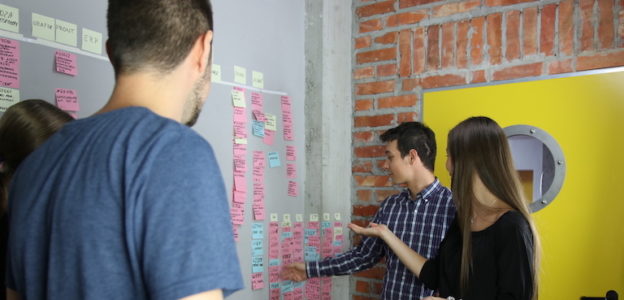The role of teams dealing with the visual side of systems has evolved over recent years. Currently, they are focused on helping users understand where they are, what surrounds them and what to expect from taking a particular action. It is safe to say that these teams play the role of „architects of understanding.”
The creative team is a combination of people specializing in UX, design and frontend. Over the years, many good practices have been created in the field of product presentation, search, filtering, purchasing process and navigation in the online store. All this so that the website could fulfil its business goals. The main elements that build the usability of the e-commerce system are:
– learnability, the level of difficulty of simple tasks performed by a user at the first contact with the system,
– efficiency, the speed of using already known solutions by the user,
– memorability, the ease of recalling the mechanisms of system operation after a longer period of time,
– errors, the number of errors made by the user and how easily they can recover from them,
– satisfaction, how pleasant is it to use the system.
Main methods
In order to create a well-designed e-commerce system based on the above-mentioned elements, the following methods can be distinguished:
– user research (scenarios, tests with the supervisor),
– analysis of user behaviour via analytical tools, e.g. Google Analytics,
– organization of content to support usability. This information architecture consists of: organization, method of content grouping, naming, navigation and searching (formulation of queries that are compared with relevant documents in all information sets).
All methods are based on universal concepts of design and principles regarding human perception.
Supporting tools
There are dozens of tools supporting the work of information architects on the market. Among them, it is worth choosing those most suited to the specifics of the target industry. Among the used tools of the UX team, we can find:
– paper and pencil, which will be used for the fastest possible version of modelling and transferring ideas,
– UXPin, Axure, which will enable modelling in a more structured form,
– Silverback, enabling to perform video tests on users, according to a previously prepared scenario. In this case, both the actions performed in the online store and the facial expressions of the user are registered. Such material is the basis for analysis and allows for the introduction of possible improvements by the project team,
– heat maps, such as CrazyEgg and Hotjar, which are used to diagnose the main areas of interest of users,
– analytical tools like Google Analytics and online store panel helpful in sales analysis.
All the above elements, combined with the intuition, experience, team knowledge and openness to search for new solutions, mean that „architects of understanding” can successfully fulfill their role.
 Polski
Polski  Deutsch
Deutsch 


